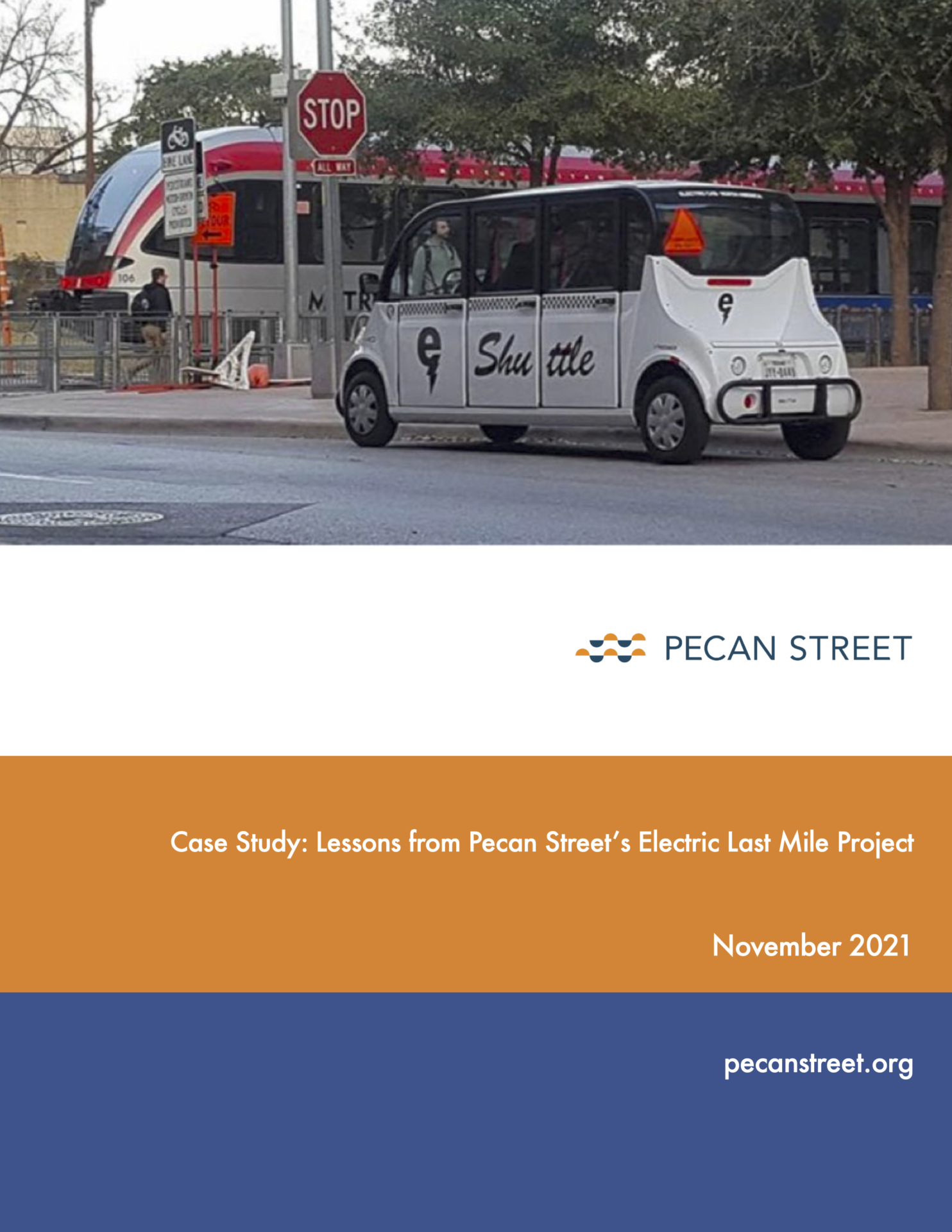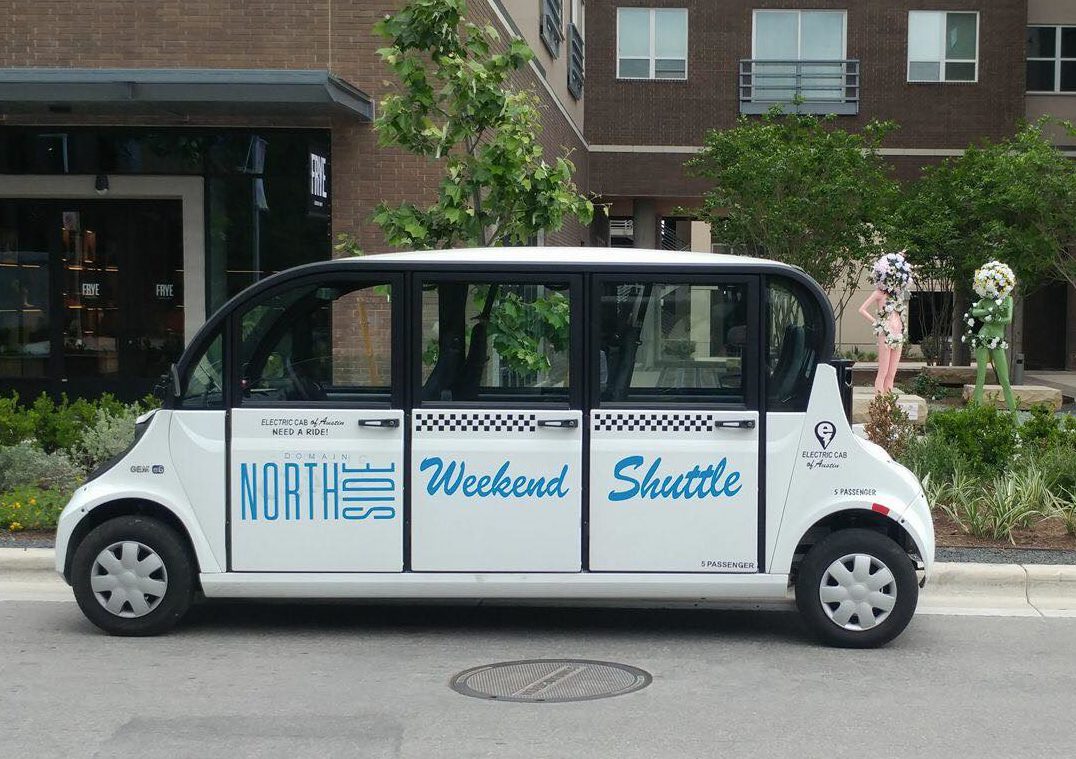 Conducted in partnership with Austin’s Capital Metro transit agency, Pecan Street’s Electric Last Mile (ELM) project sought to understand the environmental benefits of using small, electric shuttles for first-mile, last-mile, and local transit connections. Through the deployment of three pilot projects around Austin, Texas over a 24-month period, the project evaluated a variety of operational models to understand how public transit agencies can use advances in electric transportation technology to better meet local needs, improve air quality, and reduce greenhouse gas emissions. The ELM project demonstrated a unique micro-transit model that gets more residents out of personal vehicles and onto shared, zero-emission transit.
Conducted in partnership with Austin’s Capital Metro transit agency, Pecan Street’s Electric Last Mile (ELM) project sought to understand the environmental benefits of using small, electric shuttles for first-mile, last-mile, and local transit connections. Through the deployment of three pilot projects around Austin, Texas over a 24-month period, the project evaluated a variety of operational models to understand how public transit agencies can use advances in electric transportation technology to better meet local needs, improve air quality, and reduce greenhouse gas emissions. The ELM project demonstrated a unique micro-transit model that gets more residents out of personal vehicles and onto shared, zero-emission transit.
To download the paper, please enter your name and email address below. A download link will be mailed to you.






